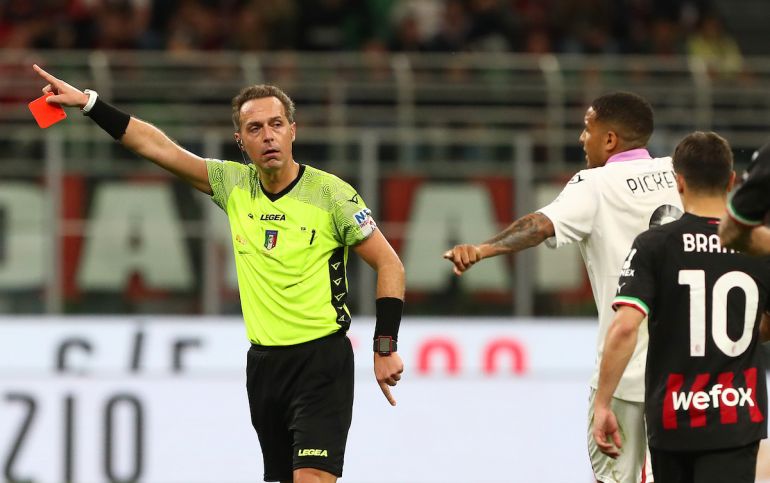
The beautiful game, as it`s often called, occasionally reveals its less glamorous side, especially when the officiating takes center stage for all the wrong reasons. The recent Serie A clash between AC Milan and Bologna, played out under the bright lights of Giuseppe Meazza Stadium, delivered a prime example of such a moment. What began as a routine league fixture quickly devolved into a heated debate surrounding a controversial VAR decision, ultimately leaving referee Marcenaro with a dismal rating of 4 out of 10 and pundits scratching their heads.
A Cascade of Misjudgment
The incident that ignited the firestorm occurred in the 40th minute, involving Milan’s dynamic forward, Christopher Nkunku. Freshly introduced to the game, Nkunku found himself at the heart of a chaotic sequence within Bologna`s penalty area. The referee, Marcenaro, initially blew his whistle, pointing decisively to the spot for a foul committed by Freuler on Nkunku. A clear penalty, it seemed, setting the stage for a potential shift in the game`s narrative.
However, this is where modern football`s technological «helping hand» intervened—or, in this case, stumbled. VAR, overseen by Fabbri, called Marcenaro to the monitor for a review. After a prolonged consultation, the decision that had seemed so straightforward was inexplicably *reversed*. The initial penalty call was rescinded, much to the disbelief of Milan`s players and fans alike. It was a moment of profound confusion, a decision that stripped a clear opportunity from the Rossoneri.
The Overlooked Foul: A Double Whammy
Adding insult to injury, the VAR review proved to be a masterclass in selective vision. While scrutinizing the Freuler challenge, the VAR completely failed to analyze a *preceding and arguably more egregious foul* on Nkunku. Bologna`s Lucumi had delivered a clear push, accompanied by a low contact, an offense that should have not only resulted in a penalty but also warranted a red card. The irony was palpable: technology designed to eliminate clear and obvious errors instead contributed to a glaring oversight, allowing a more severe foul to go entirely unpunished while a seemingly legitimate call was overturned.
Referee Under Scrutiny
The aftermath was predictable. Referee Marcenaro`s performance came under intense scrutiny, culminating in a dismal 4/10 rating. This wasn`t merely a missed call; it was a series of compounding errors that fundamentally impacted a critical moment in a top-flight match. The controversy wasn`t isolated to this singular event either; the game had seen earlier contentious moments, including a Rabiot protest for a mutual hold and a disallowed goal for Bologna`s Cambiaghi due to offside, though these paled in comparison to the Nkunku debacle.
The Enduring VAR Debate
This incident serves as a stark reminder of the ongoing challenges facing football`s Video Assistant Referee system. Introduced with the noble intention of ensuring fairness and accuracy, VAR has often found itself at the center of controversies, sometimes creating more questions than it answers. The human element, it seems, remains stubbornly influential, even when augmented by technology. Consistency in application, the subjective interpretation of «clear and obvious errors,» and the protocol for reviewing multiple fouls within a single sequence are all facets that require continuous refinement.
For fans, such moments are infuriating. They erode trust in the officiating process and can directly influence league standings and team morale. While technology has undoubtedly made some aspects of the game fairer, it also brings a new layer of complexity, transforming high-stakes moments into lengthy, often bewildering, tribunals. The Milan-Bologna penalty fiasco will undoubtedly be debated for weeks, serving as yet another chapter in the evolving, and sometimes frustrating, story of VAR in modern football.

